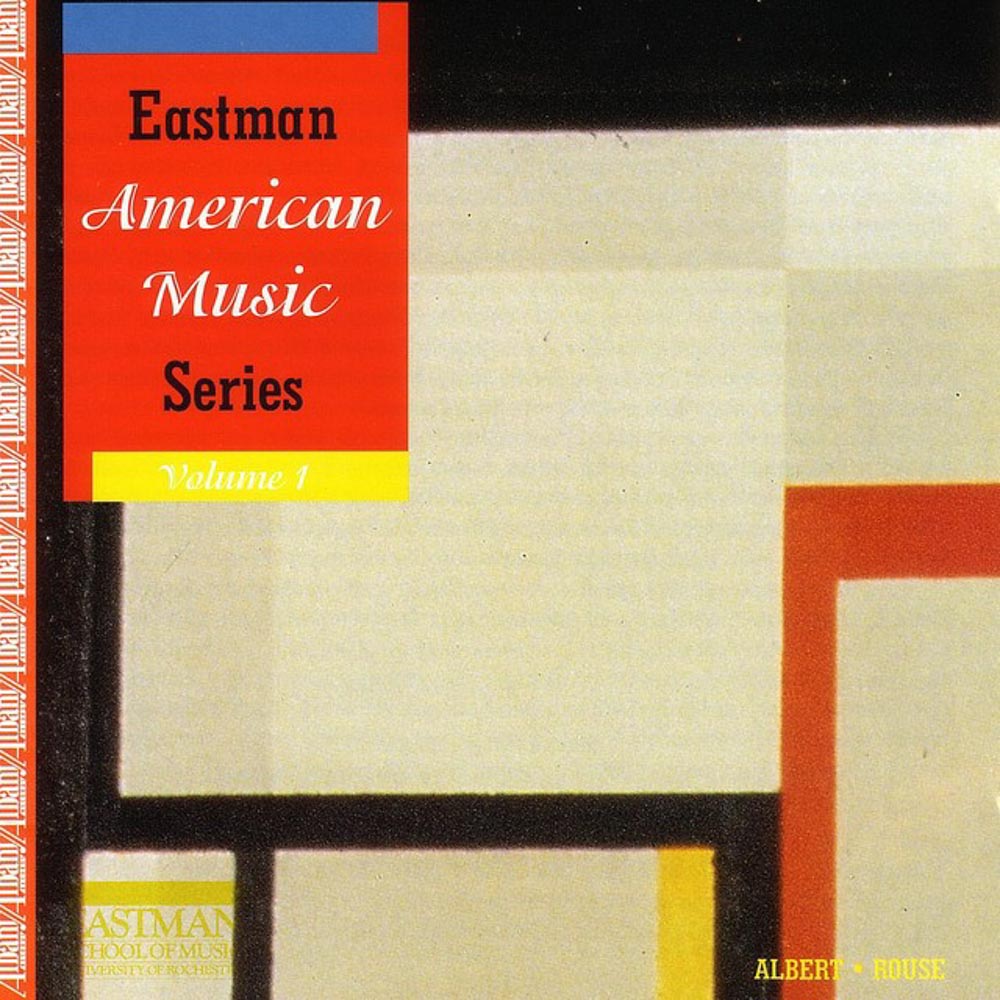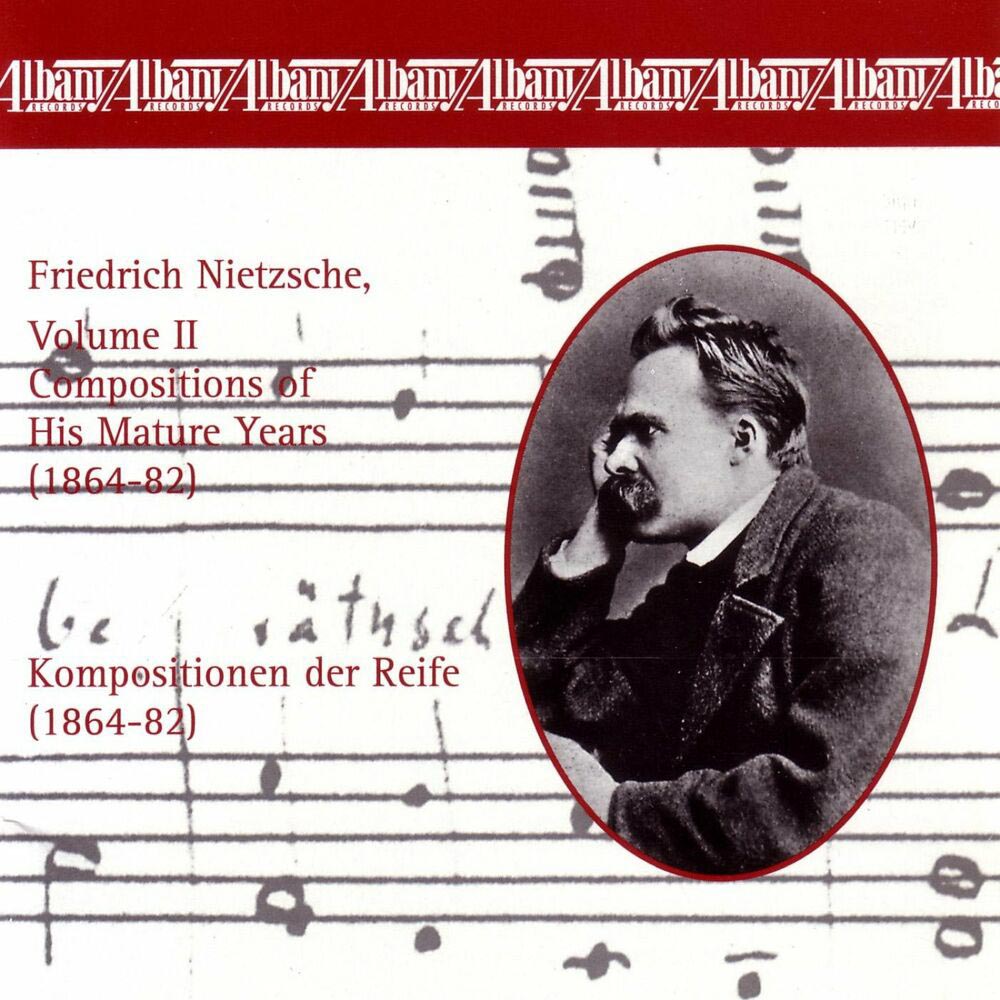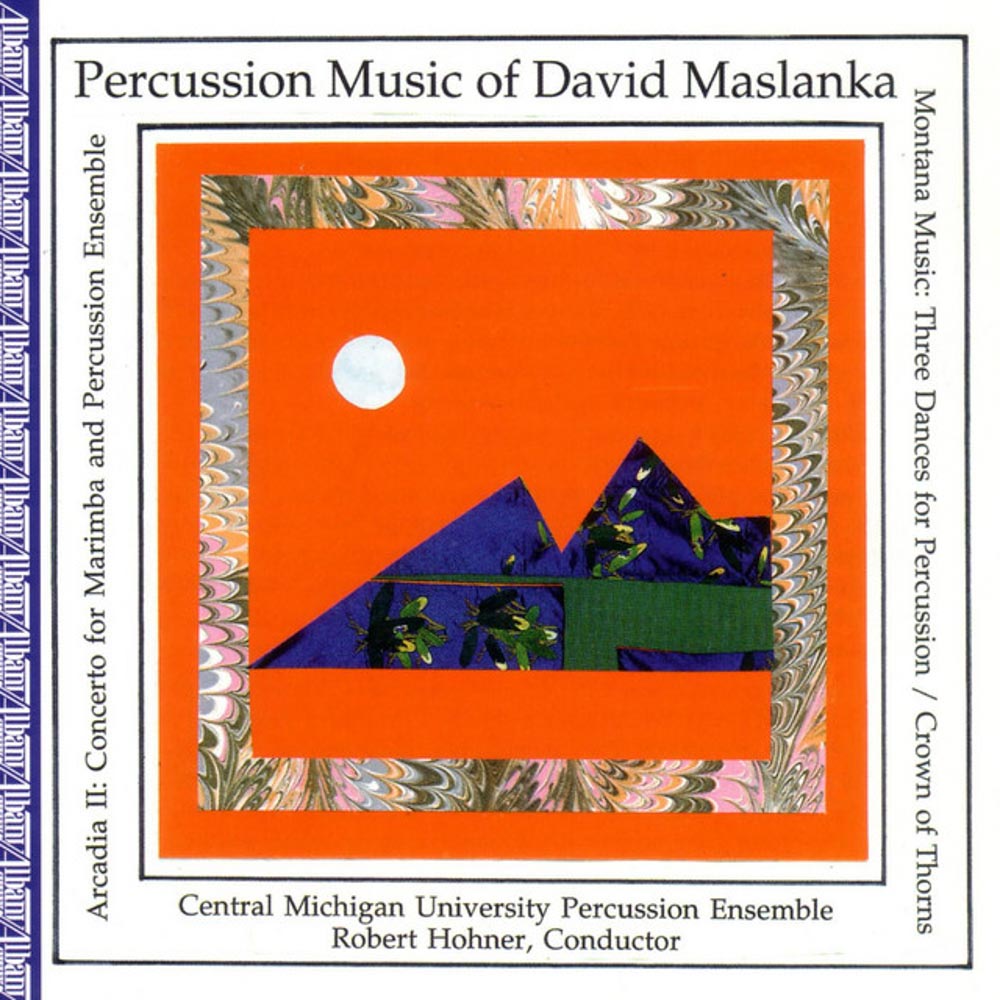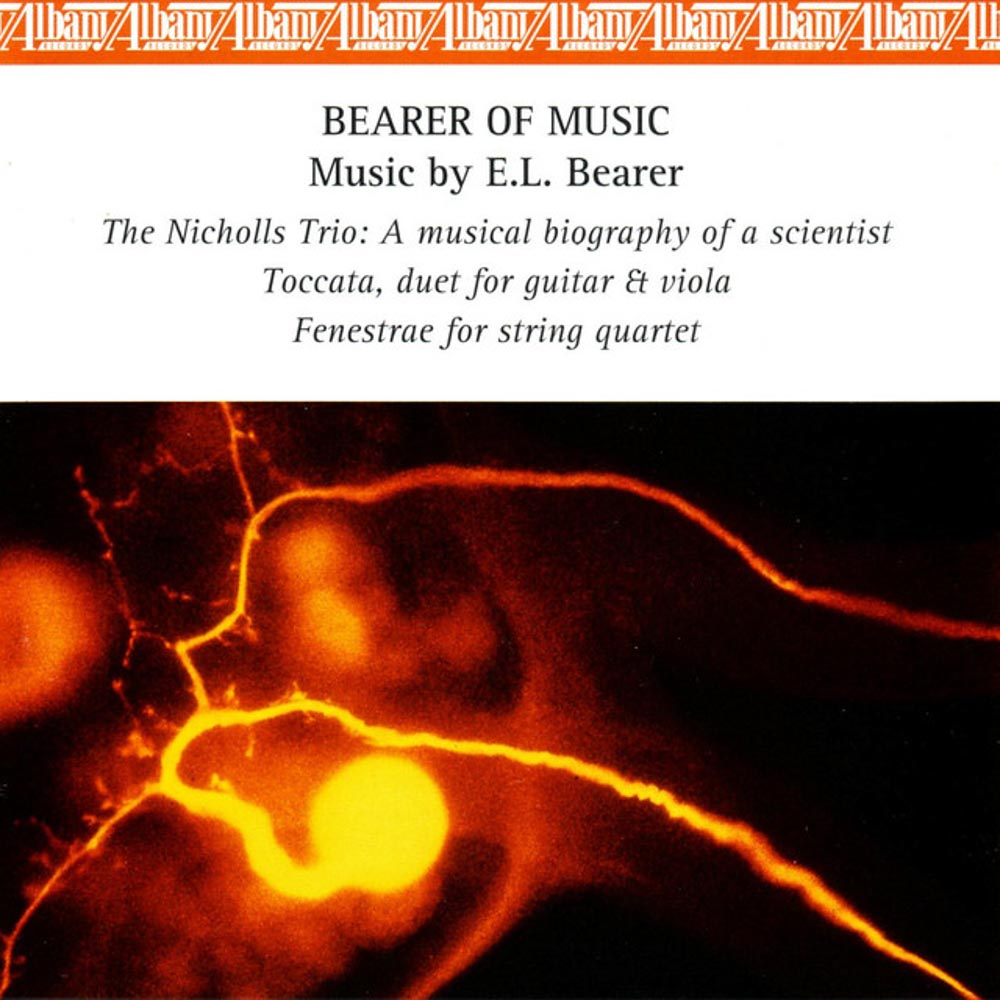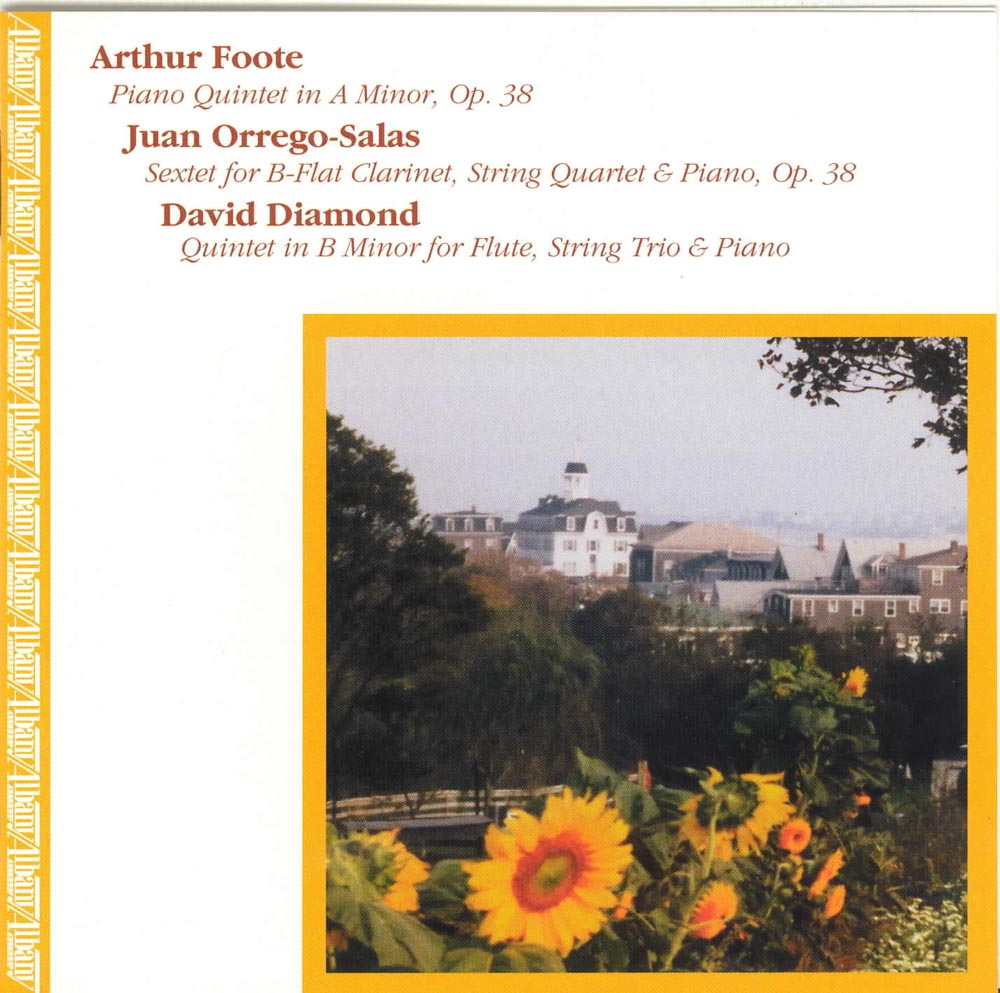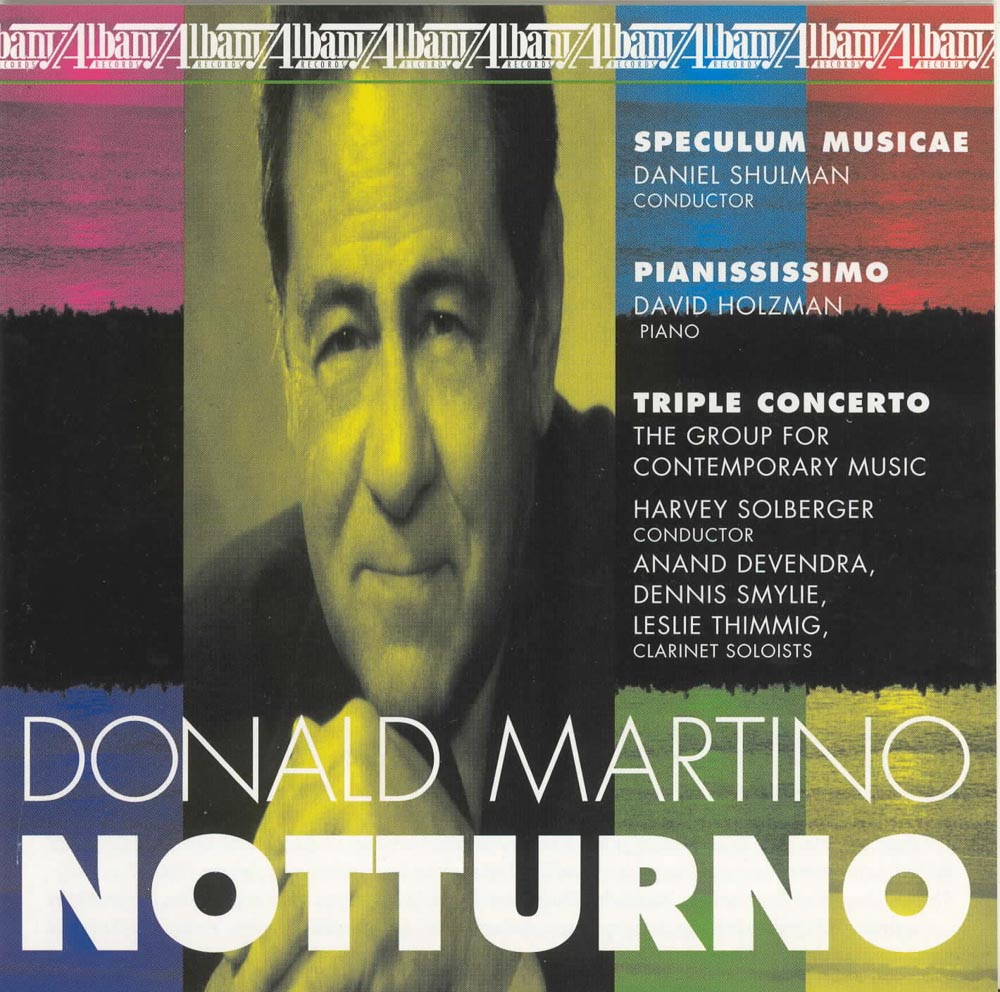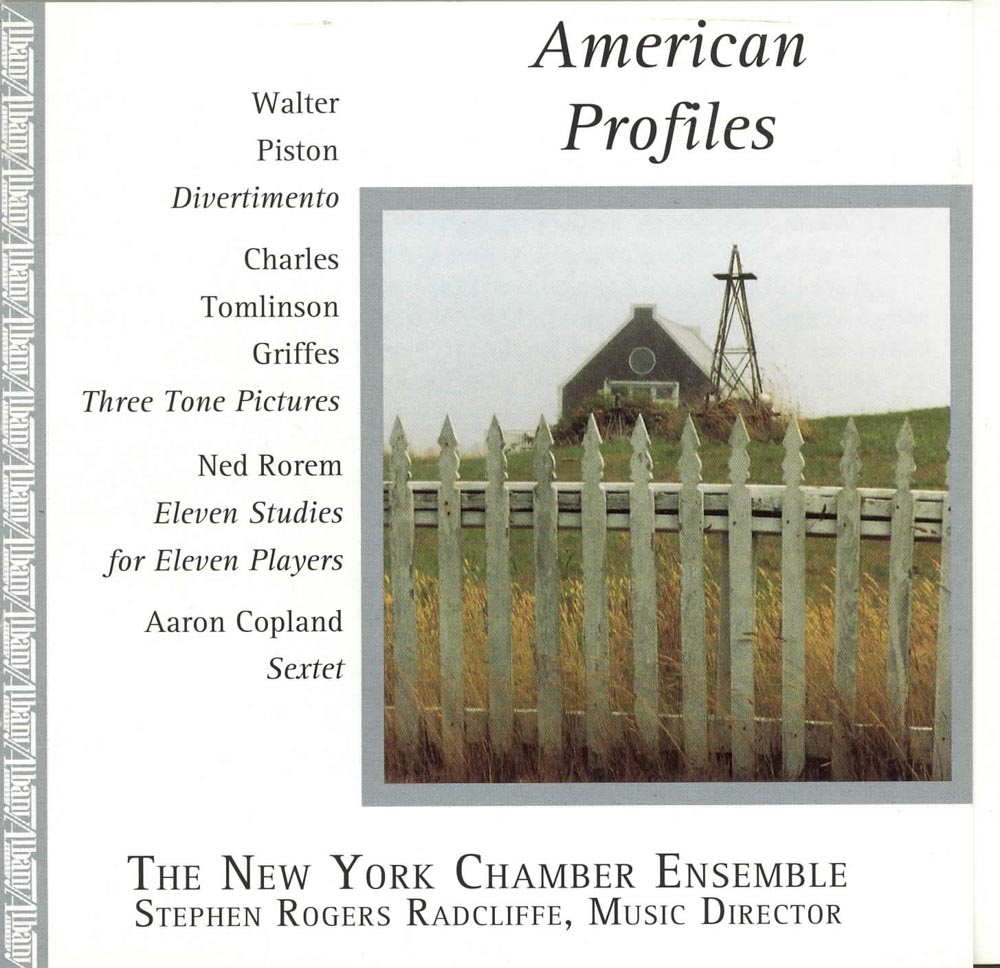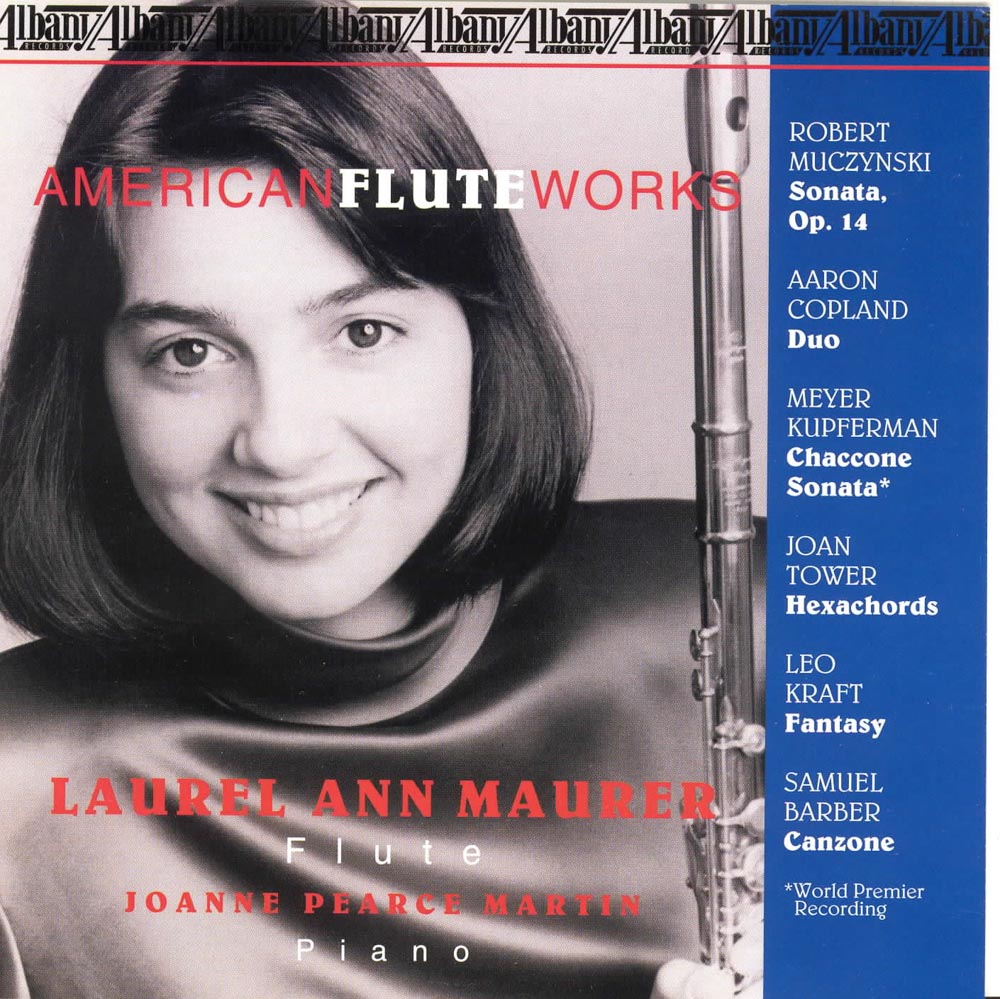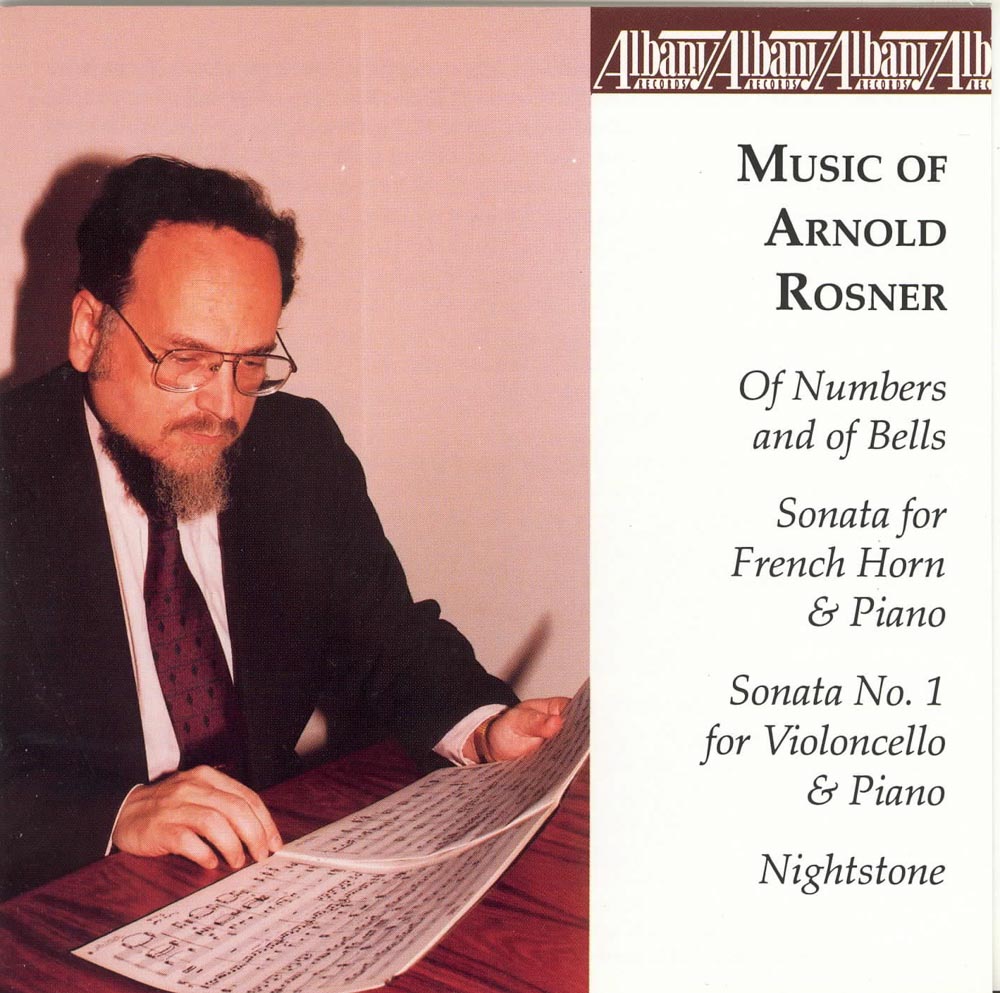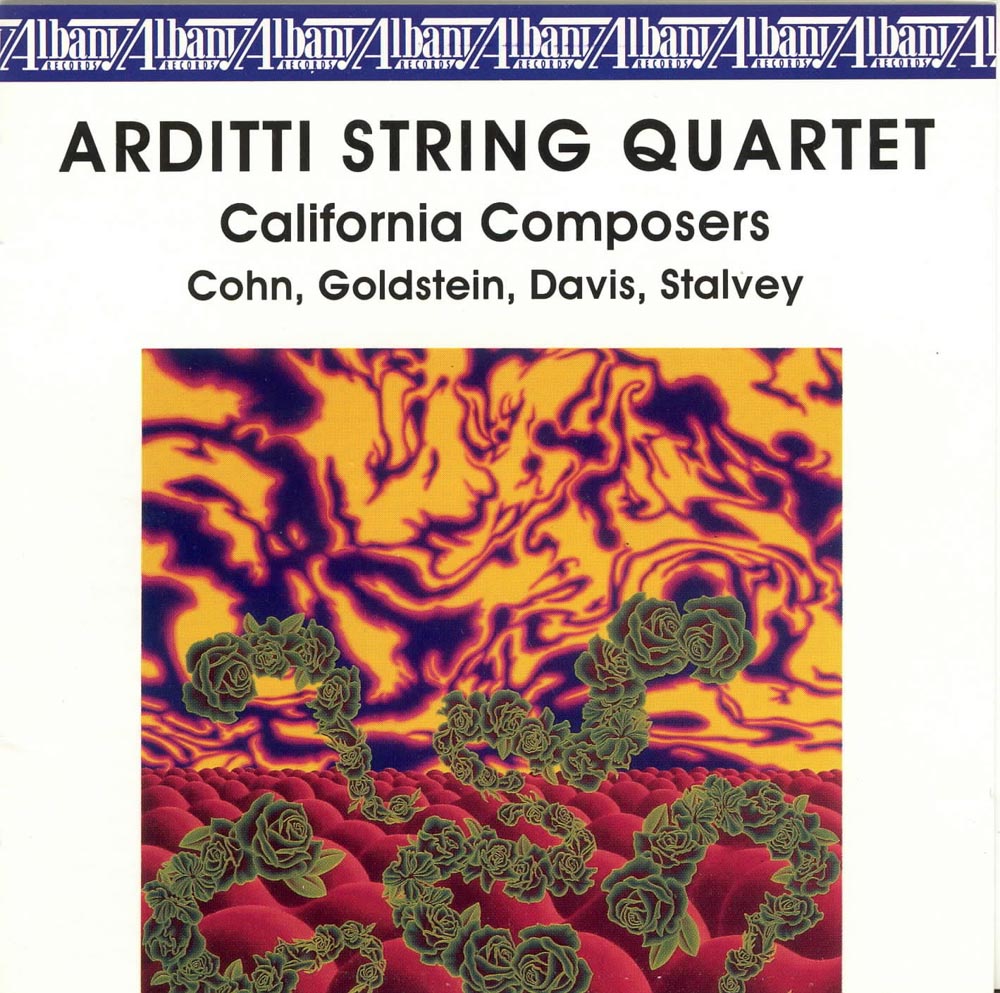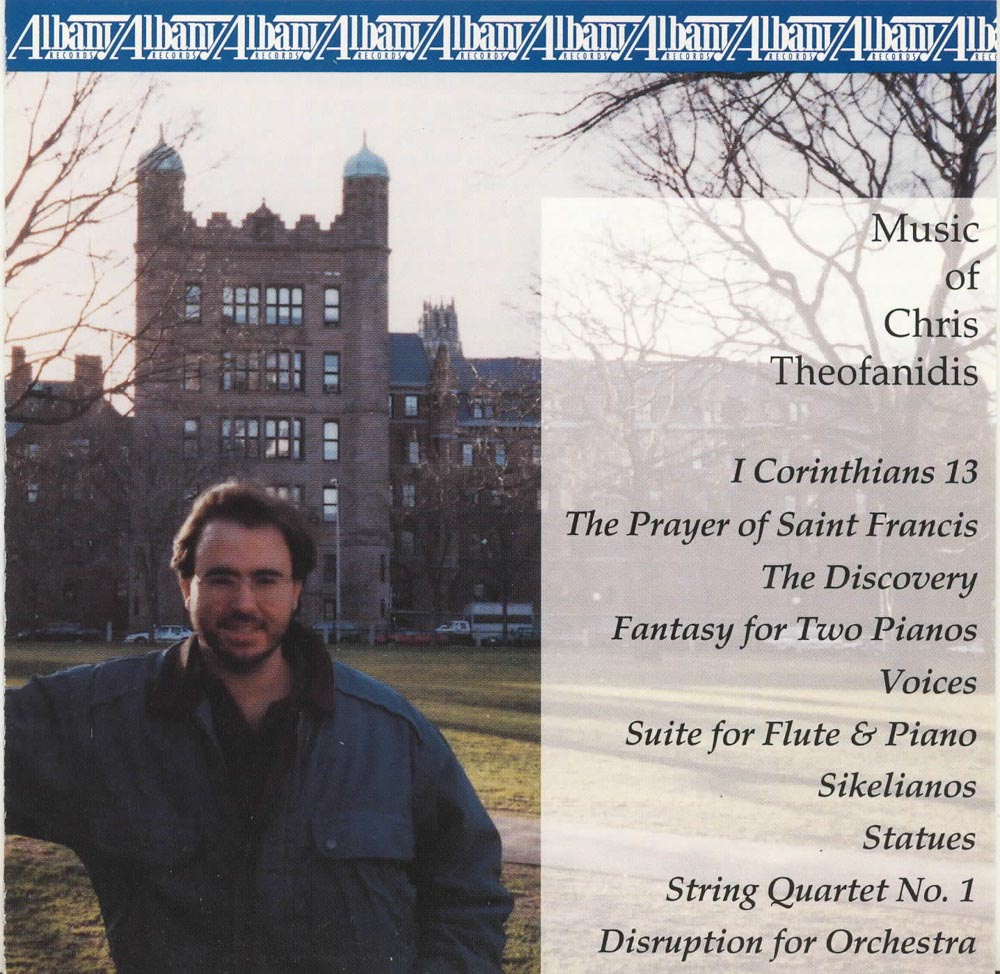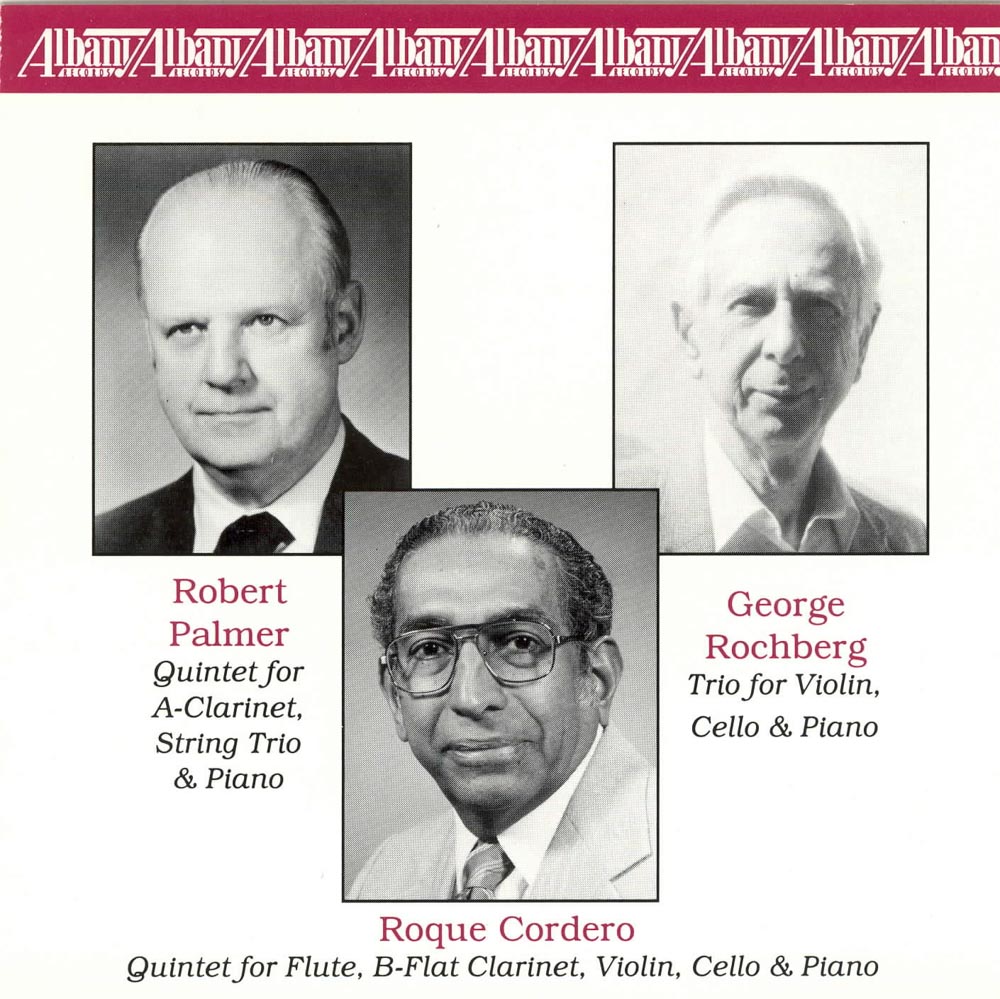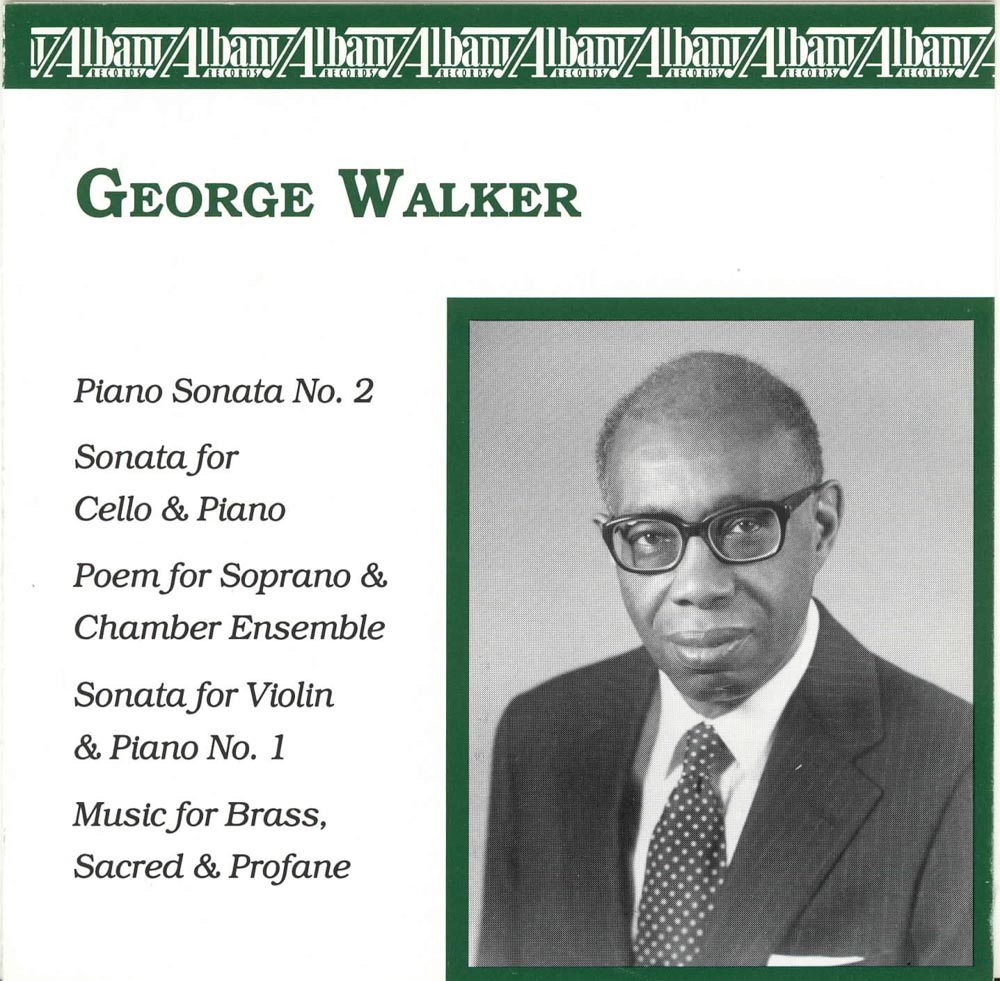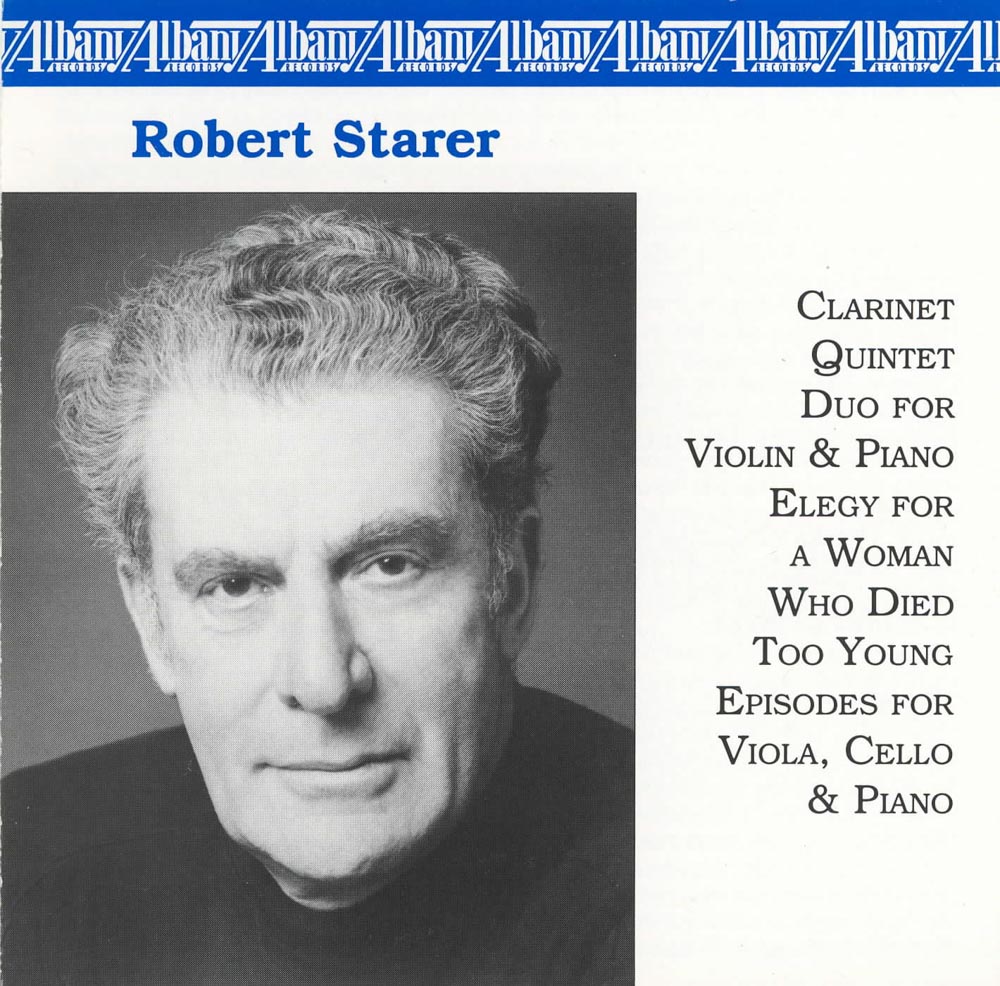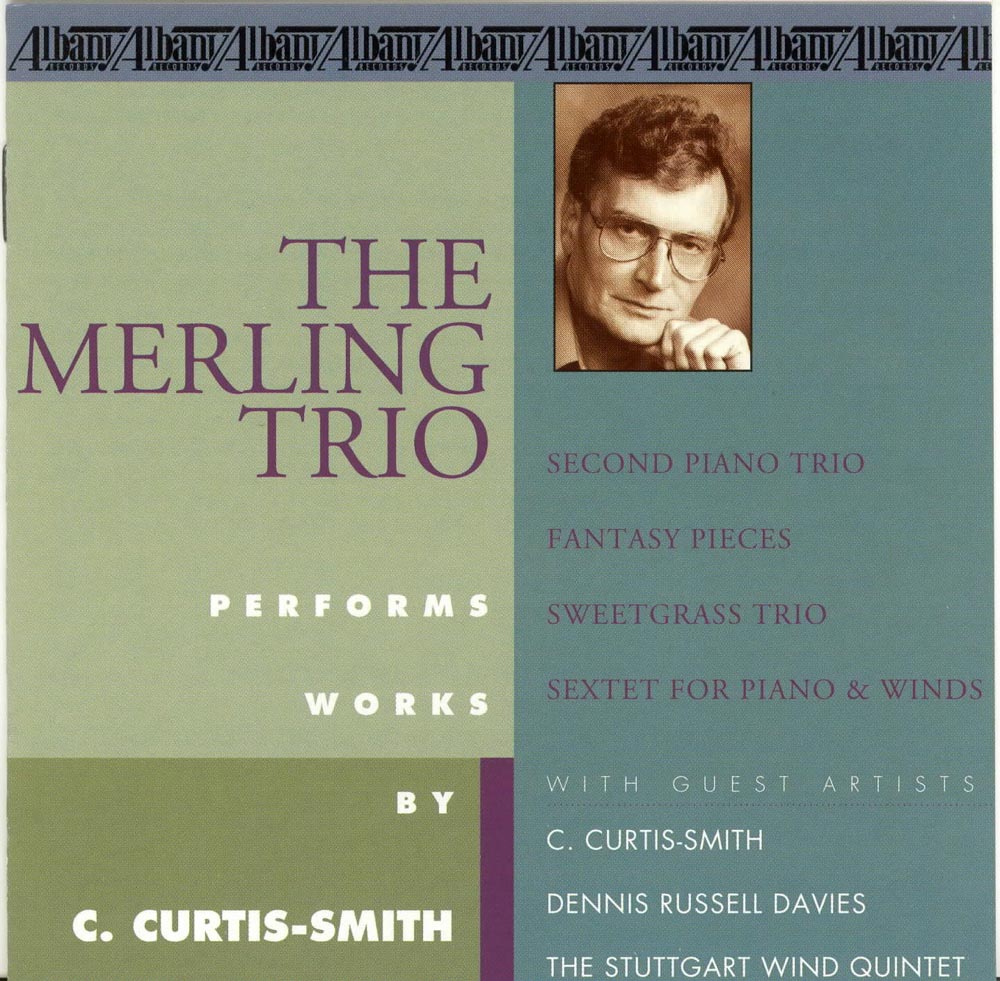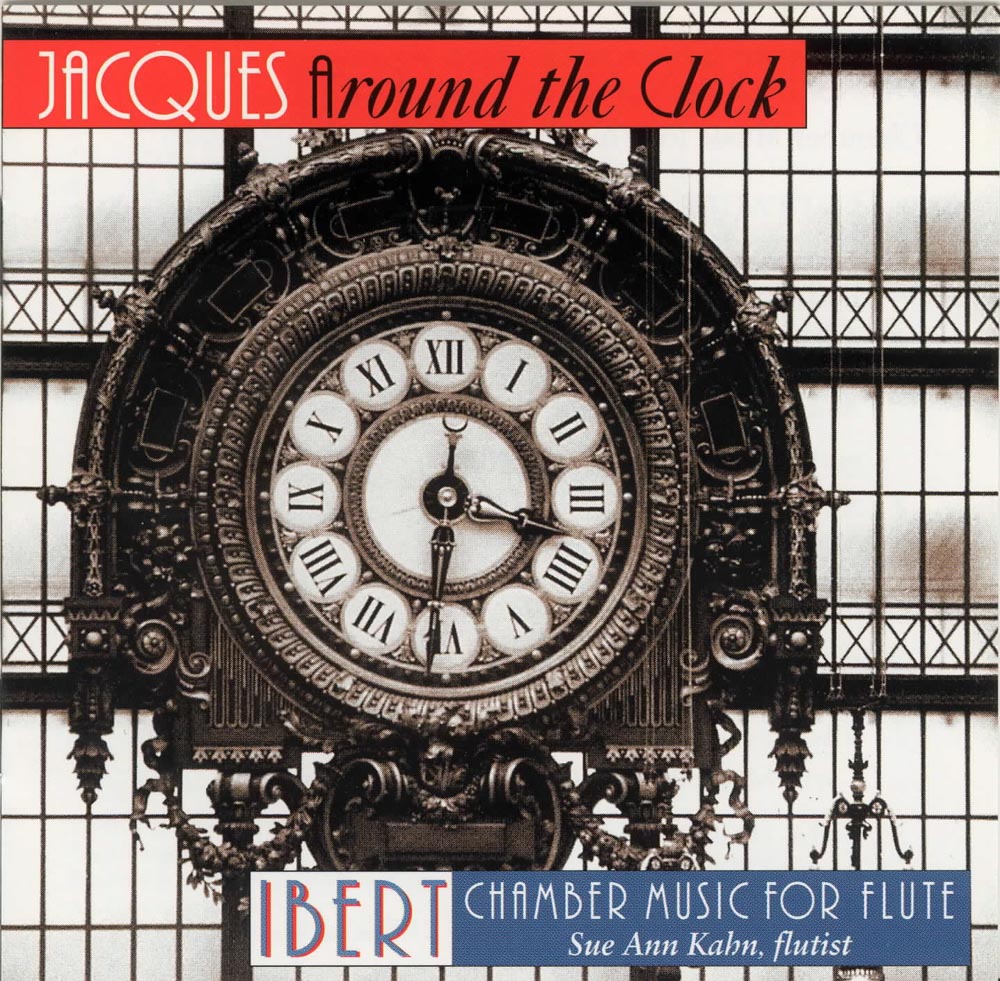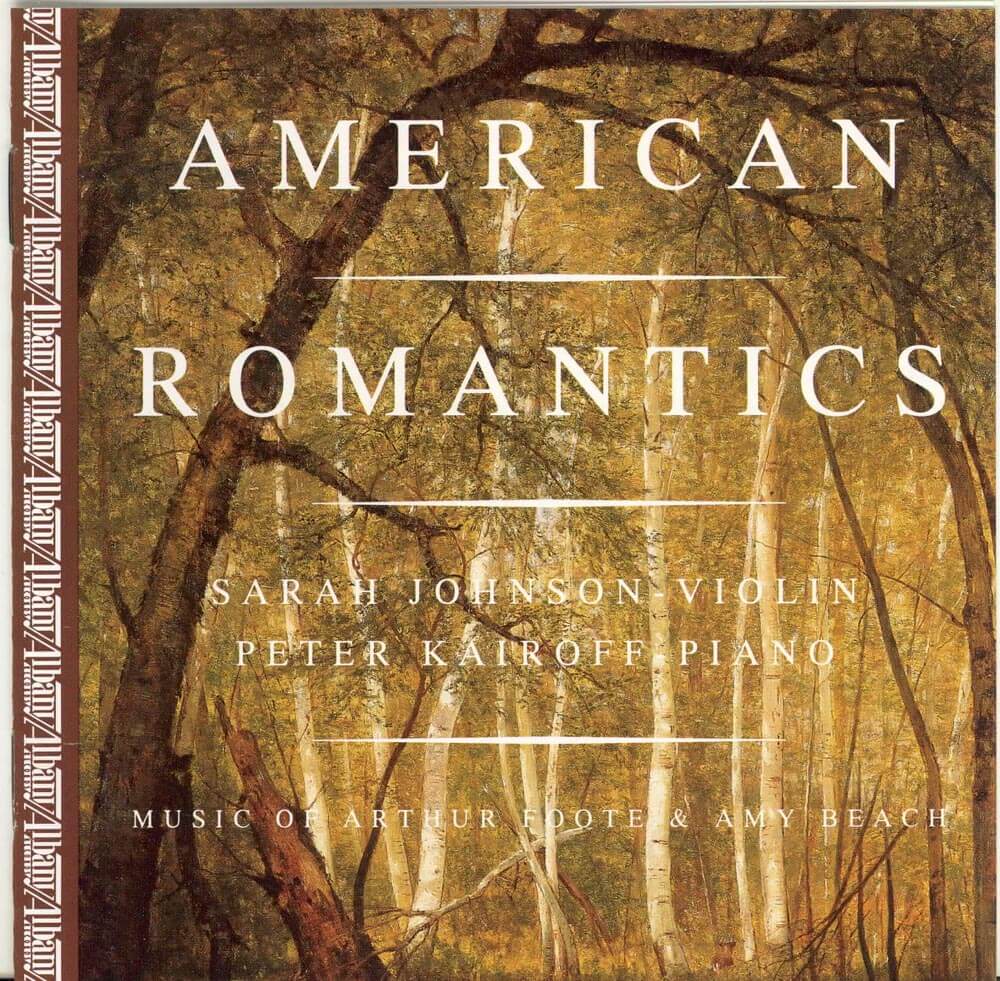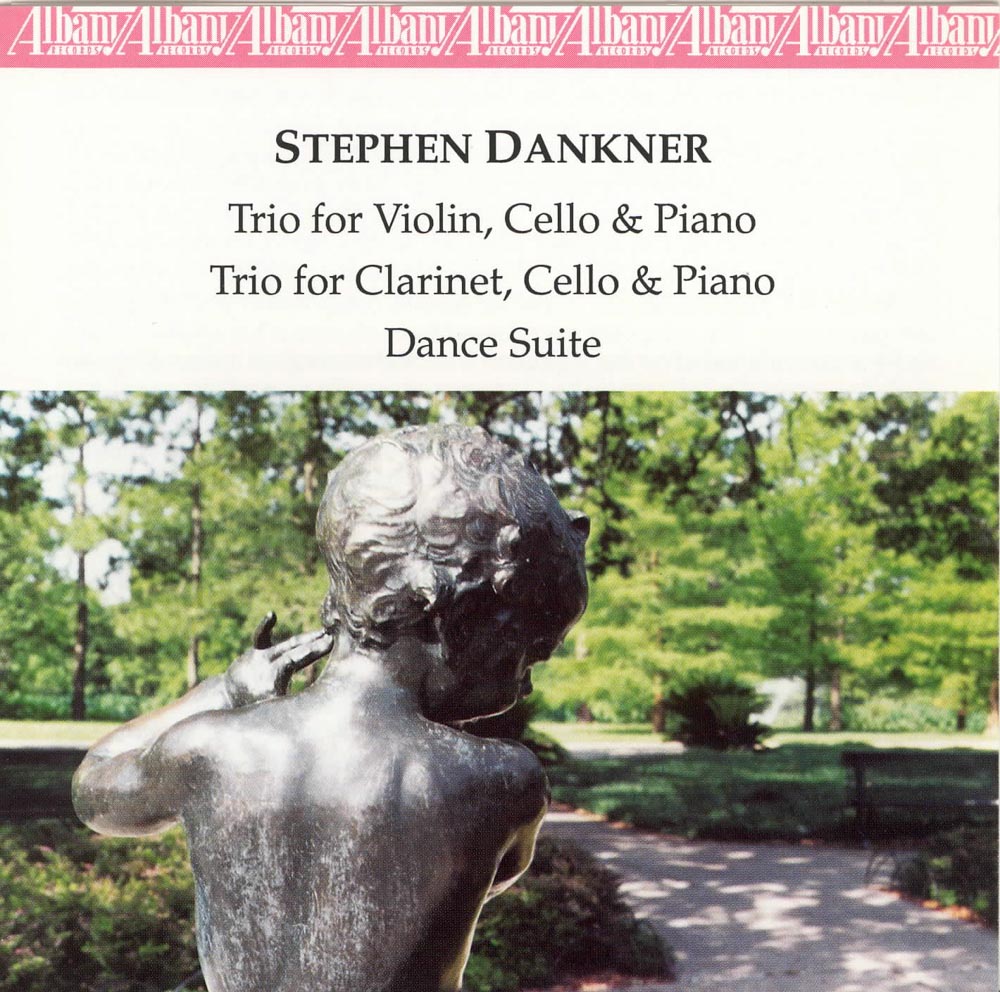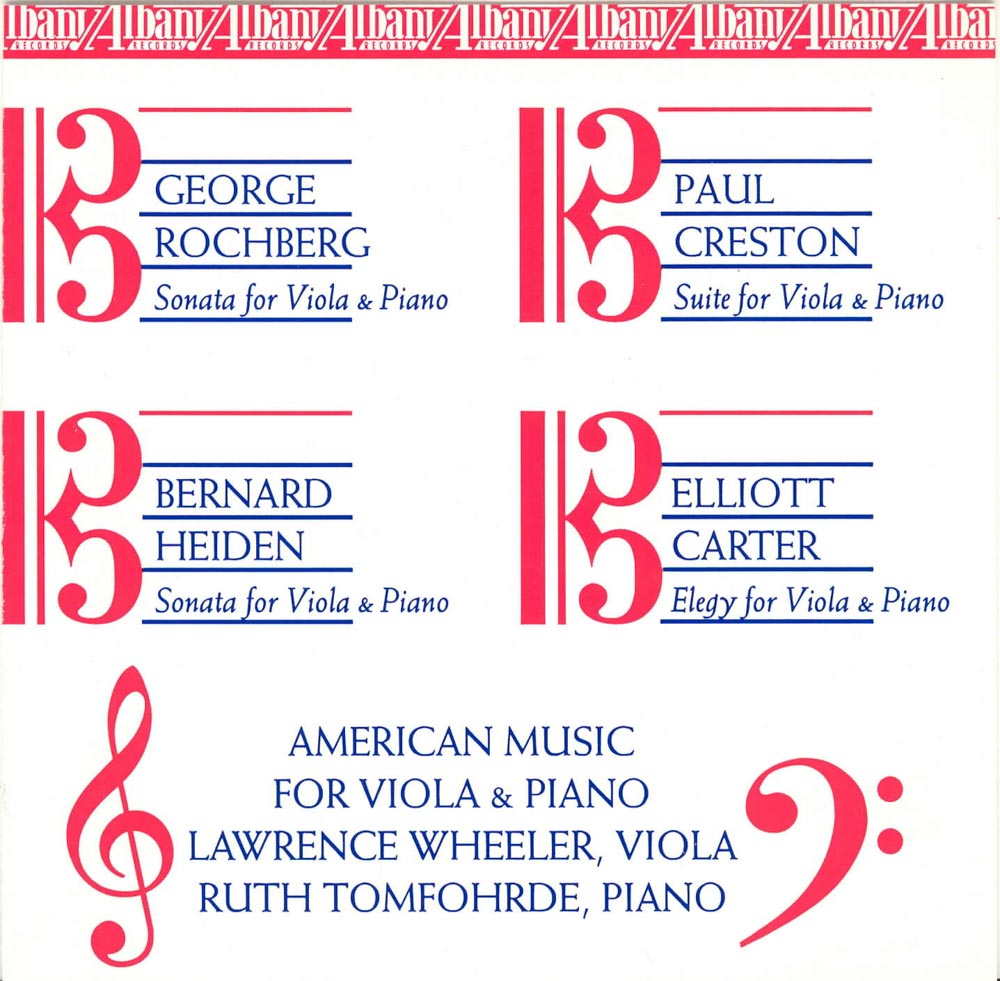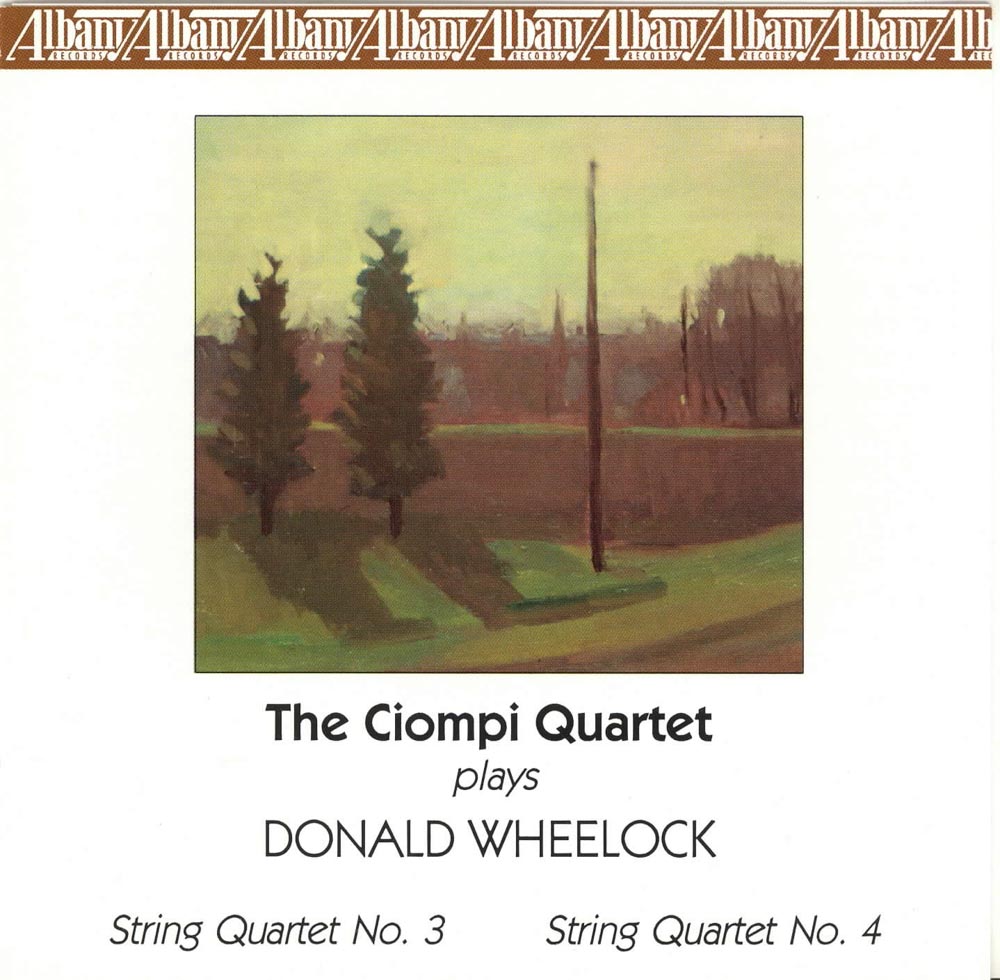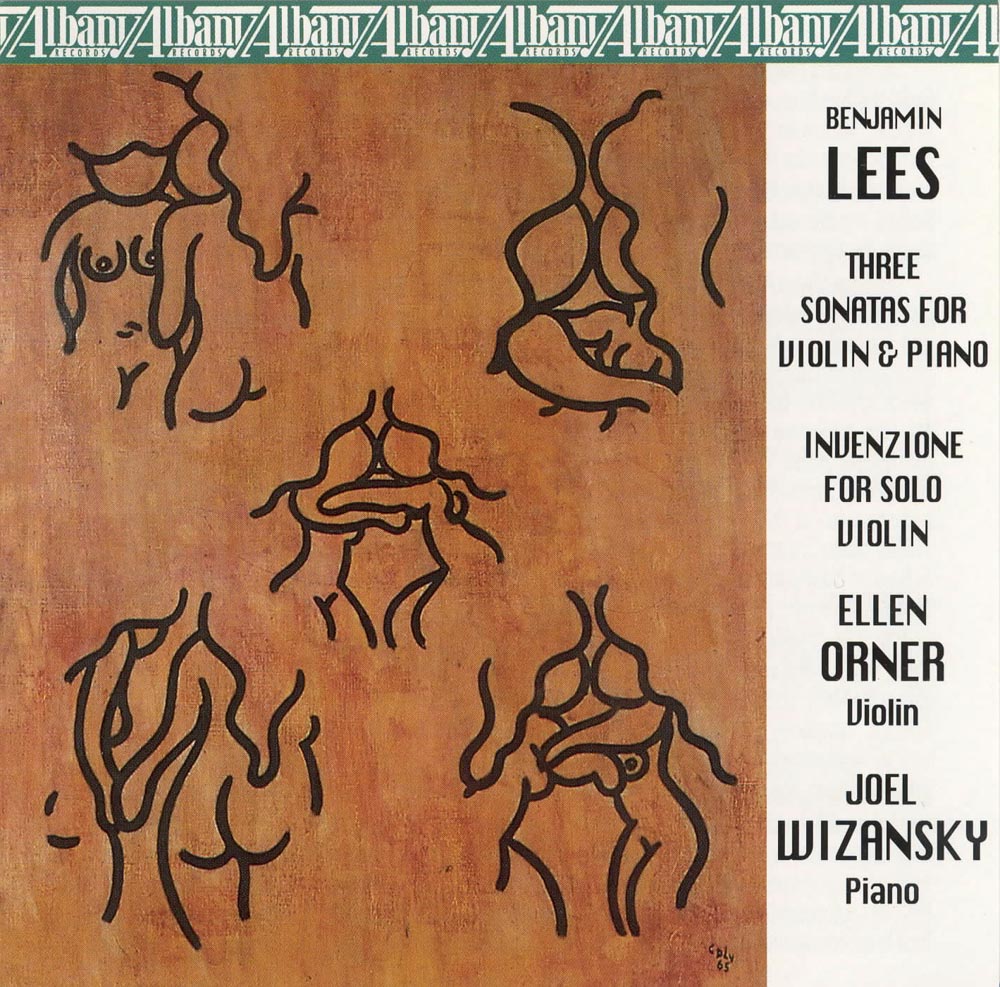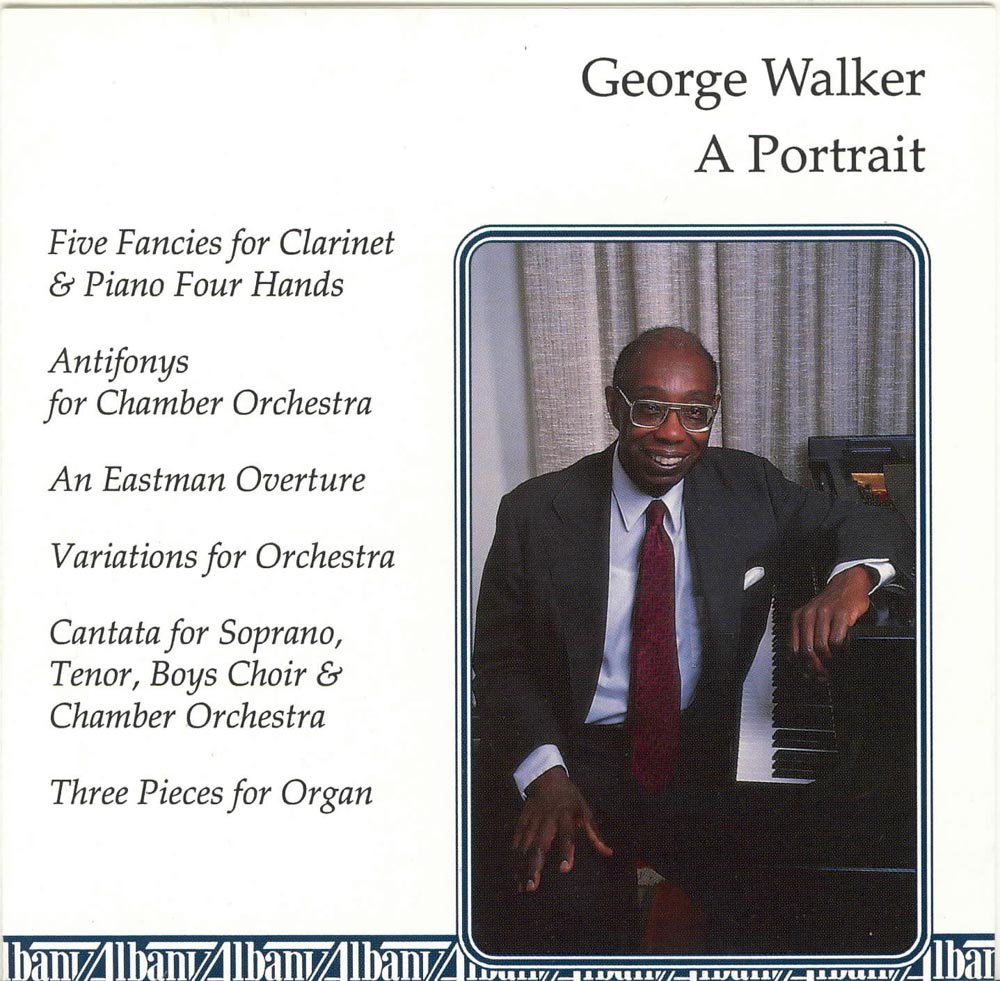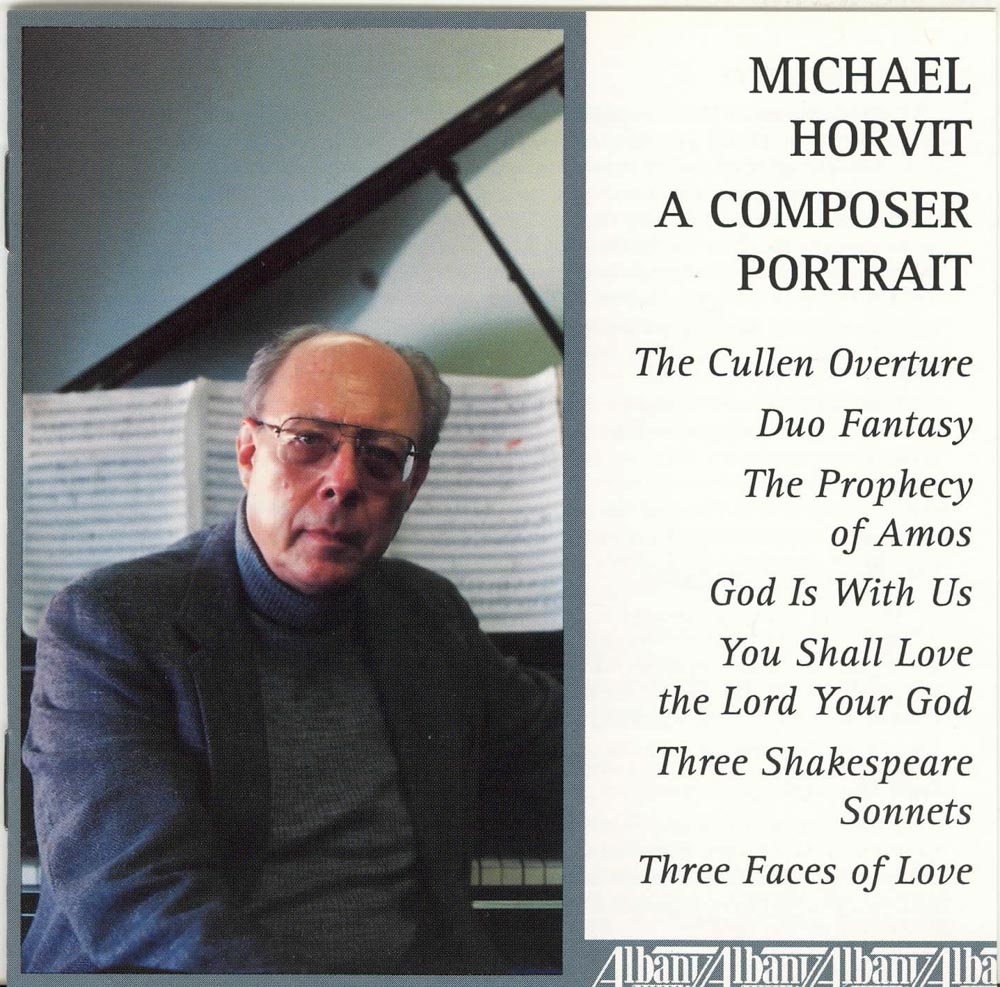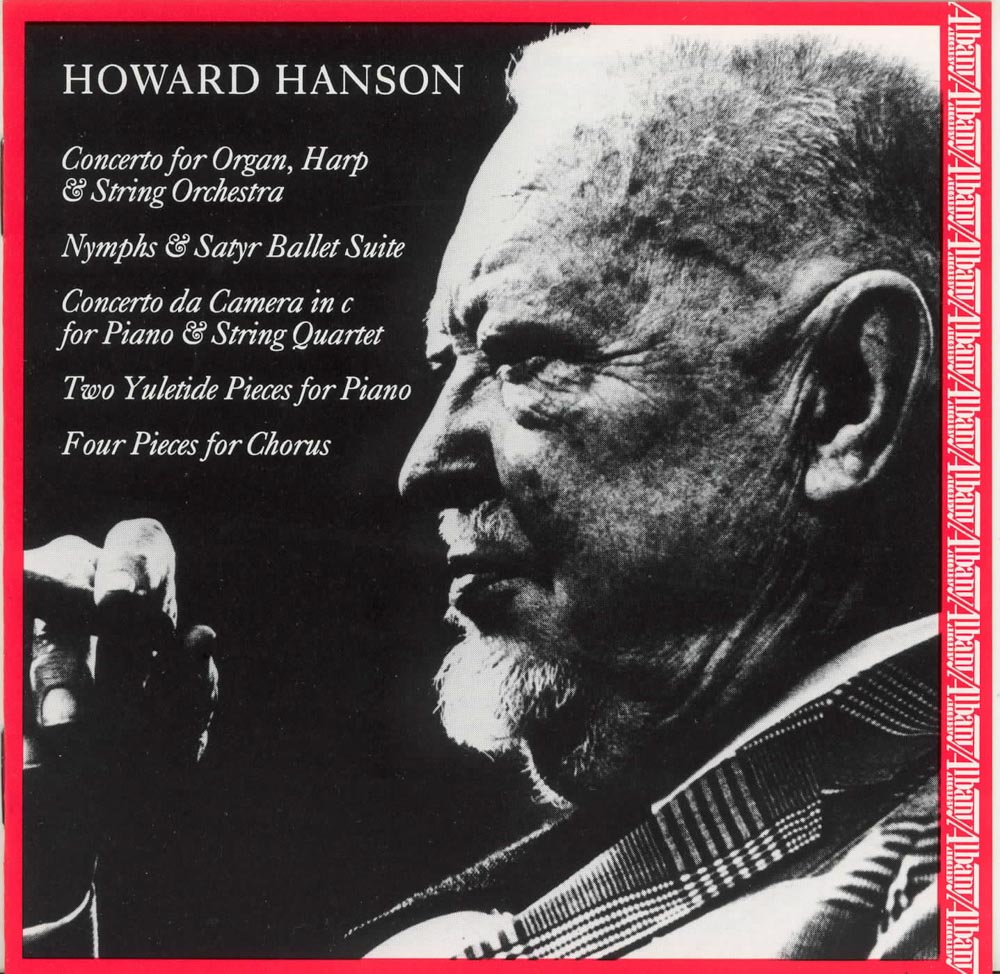Catalog #: TROY0199
Release Date: September 1, 1996ChamberJohn Davison (b. 1930) grew up in upper New York State and New York City. He studied music at the Juilliard lower school, Haverford College, Harvard and Eastman. Among his teachers were Randall Thompson, Walter Piston, Bernard Rogers, Howard Hanson and Alan Hovhaness. He has taught at Haverford College since 1959. His musical idiom is rooted in the great Western classic-romantic tradition with Baroque, Renaissance, jazz, modernist and folk elements mixing in at times. His Sonata for Horn and Piano was composed for the bicentennial of Franklin and Marshall College in 1987. It is a big, romantic work. The Sonata No. 1 for Violin and Piano was composed for the violinist who performs it on this disc, Carol Stein Amado, who gave the work its premiere in the Carnegie Recital Hall in 1976. All the works on this disc are receiving their world premiere recordings. Mr. Davison's music is most pleasing and can be easily enjoyed by anyone who has an interest in twentieth century American music.
Catalog #: TROY0191
Release Date: September 1, 1996ChamberAll the performances on this disc are world premieres. Mario Castelnuovo-Tedesco was born and educated in Florence. He studied composition with Ildebrando Pizzetti and was noticed by Alfredo Casella when he was still a young man. He worked as a pianist and freelance composer until 1939. Then, sensing the approaching danger of the Second World War, he fled fascist Italy and settled in Beverly Hills, California, where he lived and worked until his death in 1968. His early music, with its distinctive use of Italian lyricism combined with the techniques of French impressionism, made him a welcome member of the Italian progressive school. He found his greatest sources of inspiration in the Bible, his Jewish heritage and in his native Tuscany. He was a great melodist and continued to compose right up until the end of his life. Towards the end he also composed music for films. His music was performed by Toscanini, Heifetz, Segovia and Piatagorsky.
Catalog #: TROY0192
Release Date: June 1, 1996ChamberRobert Freeman, then Director of the Eastman School of Music says in the introduction to this recording: "Ever since the appointment of Howard Hanson as Director of the Eastman School of Music in 1924, Eastman has been on a continuing course to encourage the future of music by American composers. From the earliest years of Dr. Hanson's 40-year directorship, Eastman produced each spring a festival of new works by young Americans, including the first performances of Orchestral works by Copland, Piston, Carter, Thompson and Sessions, for example, together with the initial performances of a great many works by Eastman faculty, graduates and students. Recordings conducted by Hanson, of the music of American composers from his own and earlier generations, helped spread both familiarity with many American composers and the reputation of the Eastman School all over the world. In the meantime, the strength of Eastman's composition program remains unabated under the current faculty. We at Eastman are all very proud of the opening of a new recording series with Albany Records, a firm that continues to make the most notable accomplishments in behalf of music in America." We at Albany are equally proud that Dr. Freeman and the musicians at Eastman are working with Albany Records for this historic new series of recordings made in their lovely recording facilities, in honor of their 75 years of service to American music. You, too, will be pleased with this selection of the music of two Pulitzer Prize winning composers: the late Stephen Albert and Christopher Rouse.
Catalog #: TROY0181
Release Date: June 1, 1996ChamberThis second volume of compositions by Friedrich Nietzsche begins with works he wrote in 1864, just before his twentieth birthday. During this year, he completed his schooling and commenced studies in philology and theology at the University of Bonn. It was the most productive year in his career as a composer, at least if one considers the quantity of finished works. These include his only completed piece of chamber music, a fantasy for violin and piano, and a song cycle. With the beginning of his university studies, his desire to express himself through music diminished. During his studies in Bonn and later in Leipzig, he wrote only a few occasional compositions: one song, a few small choral works, and some incomplete sketches for larger works. His connection with music took another, more fateful turn through his encounter with Richard Wagner. It was in Leipzig, in November 1868, that Nietzsche met Wagner for the first time. The ensuing friendship with the master and his wife became a matter of pivotal importance for his life, and really provided the impetus for his literary career. On his further development as a composer, however, this relationship seems to have had little influence. After a hiatus of several years during which Nietzsche did not write music at all, there followed a relatively short period, between 1871 and 1874, when he again took up composition. At that time, he had established himself as Professor of Philology at the University of Basel.
Catalog #: TROY0190
Release Date: March 1, 1996ChamberThis disc of the percussion music of David Maslanka is appealing on two counts; first it has great sound with good playing, and second, the music itself is terrific. About Montana Music the composer writes: "The work is in three slow movements. They are nocturnal, lunar, inward pieces, dedicated to the spirit of the Earth, which speaks with a particular power in the mountains of my adopted western Montana. The vibraphone is often the center of attention in this music. Its evocative bell-like character may be thought of as a motif for the whole work. Arcadia means a pastoral district of ancient Greece, or any place of rural peace and simplicity. It refers as well, to the mythic land of human origin. The title Arcadia II has a double intent: it is the second piece of mine with the title Arcadia, and it is a musical prayer for the well-being of the Earth. The Concerto uses a traditional concerto form: faster outer movements surrounding a slower middle movement. The first movement arises from the darkness. I remember standing in a New Hampshire meadow on a summer evening. One by one the fireflies lit up until the darkening field was alive with their activity. The tiny opening bell sounds of this movement represent the fireflies. The second movement is a nature meditation. IT comes directly from my walks in Inwood Hill Park in upper Manhattan. The last movement is infused with a spirit of playfulness, light, and simple joy in the glories of nature. The title Crown of Thorns is an obvious reference to Christ's crown of thorns, but the name first came to me as a possible title for a piece from seeing a plant called the "Crown of Thorns" at the New York Botanical Gardens. It is a rambling, thorny desert plant from the Middle East, with small green leaves, and small, very simple and pretty red flowers. The rambling, interweaving, vine-like stems suggested music to me."
Catalog #: TROY0189
Release Date: March 1, 1996ChamberIn his notes for this release in an essay entitled Music, Medicine and Elaine Bearer, Steven Ledbetter writes: "Elaine Bearer is a remarkable contemporary example of a composer who has also actively followed the very different career of a medical researcher. Already, at a very early age, she was called upon to choose between two passions, and although one or the other seemed to win out temporarily, both have been continuing realms of activity in a busy life. Music first seemed to have the upper hand. She began composing at the age of six. Music continued to enthrall her during her secondary school years and she attended Carnegie Mellon University as a music major, studying composition with Carlos Surinach and Virgil Thomson. In 1967 she went to Paris to study with Nadia Boulanger and upon returning, completed her bachelor's degree at the Manhattan School of Music, where her teachers included Mario Davidovsky. During these years, she also freelanced on the French horn, playing in the American Symphony Orchestra under Stokowski, the Pittsburgh Symphony, and the Orchestre de Paris, under Charles Munch. She received her master's degree in musicology from New York University and began work on her doctorate there. Music would seem to have won out. In 1973, she moved to San Francisco and began teaching music and composing. The composing never stopped, but before long she discovered that teaching solfeggio and dictation to freshman was detrimental to her inner ear and turned to biology, the other subject that had always interested her. Following two years at Stanford to get the medical school prerequisites she had bypassed earlier, she proceeded to the University of California, San Francisco, where she earned an M.D. and a Ph.D., completing both degrees in record time. Then followed a year in Geneva, Switzerland where she joined Lelio Orci's Laboratory at the University of Geneva. Upon returning to San Francisco she did a residency in the Department of Pathology while at the same time, was Composer-in-Residence to the university's symphony Orchestra. In 1991, she moved to Brown University in Providence, Rhode Island, where she holds two appointments, as Adjunct Assistant Professor of Music as Assistant Professor of Medical Science, continuing her active life combining music and medicine." These facts alone should make you want to experience this disc. The music is accessible and appealing.
Catalog #: TROY0188
Release Date: March 1, 1996Chamber"Requiem Songs was begun about two years after I returned from a four month stay in the former Yugoslavia. It was originally planned to be an upbeat piece, using some of the musical ideas I had collected during my time in the Balkans, but the advent of the war in Croatia and Bosnia left me unable to complete the commission as I had originally planned it. It seemed like the culture I had known briefly was dying, and the appropriate musical response was to write a requiem for it. I briefly toyed with the idea of combining parts of the various liturgies used in the Balkans as source material for the work. However, as I focused more on the nationalistic conflicts which seemed to be springing up throughout eastern Europe and the former Soviet Union in the wake of the collapse of communism, I found myself thinking more and more that this was not about Bosnians and Serbs, but really about all people who see their own national identity as requiring the annihilation of people with another national or ethnic identity. The problem is not limited to victims of Serb or Croat aggression, but rather to the victims of nationalism throughout the world. Screen Scenes is not about anything political, but simply about how we perform music. One of my continuing musical interests over the years has been to find new ways to work with improvisation. I love the kinds of spontaneity and imagination that seem to appear when good improvisers play, and the depth with which ensembles must listen to each other in improvisational situations. On the other hand, as a composer, I also tend to have very specific ideas about how I want a piece of music to sound, how it should develop, how it should be structured, etc. So the problem is: how do I create a work in which I keep the kind of control which is important to me, while giving the musicians the kind of freedom they require for improvisational interaction. Screen Scenes is one answer." Neil Rolnick has been active internationally as a composer and performer of computer music since the late 1970s. He has appeared in concerts throughout North America, Europe and Japan. Currently he is Chair of the Arts Department and Director of iEAR Studios at Rensselaer Polytechnic Institute in Troy, New York. This is a disc of appealing, profound and topical music.
Catalog #: TROY0178
Release Date: January 1, 1996ChamberFriedrich Nietzsche (1844-1900) was fully conscious of his significance as a thinker who would deeply influence the direction of philosophical inquiry of future generations. His reputation as a philosopher is firmly established, but before he engaged himself fully as a philosopher, he had already created a substantial output as poet and composer. Musical composition preceded his involvement with philosophy and is therefore usually considered to be of little importance for an understanding of his thought. Nietzsche himself, however, considered it important that at least some of his music should be known in order to avoid misunderstandings of his basic intentions as a philosopher. In a letter from October 1887, he wrote: "...there has never been a philosopher who has been in essence a musician to such an extent as I am." However, when it came to his music, he did not display his usual assertion of superiority. In the same letter he says: "Even so, it is possible that I might be a thoroughly unsuccessful musician." During his lifetime, his compositions were not accepted as significant, either by his friends or by a wider public. Even after his name had become universally known, his compositions have either remained unknown or have only been accepted as biographical curiosities. Most of his music was written between the ages of 13 and 22. It is the purpose of these recordings to make the sound of these compositions accessible, so that a judgment concerning their style and their value can be made by the listener without having to rely on the judgment of others, even if those others are of the stature of Richard Wagner and Hans von Bulow. This first volume contains music Nietzsche composed before the age of 20. This disc contains a very detailed commentary on his emotional and intellectual development. Since he composed without a teacher, without regular instruction, and with very little external encouragement, this music is also a vivid demonstration of his innate impulse for self-expression, of his independence and of his willingness to accept risk and potential failure.
Catalog #: TROY0176
Release Date: January 1, 1996ChamberArthur Foote was born in Salem, Massachusetts. He entered Harvard at the age of 17 and studied with John Knowles. Paine. In 1875, he received the first Master's degree in music ever given in this country. He was a professional organist active in the Boston area. He was very fortunate in that he could and did compose orchestral music that was performed by one of the best orchestras in the country at the time; the Boston Symphony. He taught music in the Boston area for more than 50 years. In 1944, taking advantage of two successive fellowships from the Rockefeller and Guggenheim Foundations, Juan A. Orrego-Salas left his native Chile to study in the United States with Randall Thompson and Aaron Copland. He has taught extensively in both Chile and the United States. His Sextet was first performed at Tanglewood in the summer of 1954. Mr. Orrego-Salas has composed four symphonies, concerti, two ballets, an opera, a mass, two cantatas and a great deal of film music. This recording of David Diamond's Quintet is issued in honor of his eightieth birthday.
Catalog #: TROY0168
Release Date: November 1, 1995ChamberThis release contains reissues of the Nonesuch recordings from the mid-seventies. For those who remember these recordings, the sound is every bit as spectacular as it was on the original and the playing is breathtaking. Donald Martino is one of America's most important composers. Notturno for piccolo-flute-alto flute, clarinet-bass clarinet, violin-viola, cello, percussion and piano won the Pulitzer Prize for Music in 1974. The greatness of Martino's music is the manner in which it assaults the ear and the imagination. This makes it such a challenging listen. Andrew Porter described Pianississimo, Martino's exuberant celebration of pianistic possibilities, as "an enchanted journey, through circles where transfigured shades of Bach, Beethoven, Chopin and Ravel sometimes glimmer, in a realm at once welcoming and strange." The Triple Concerto for clarinet, bass clarinet and contrabass clarinet with a chamber ensemble of 16 players was composed on a commission from the Group for Contemporary Music and dedicated to the composer Milton Babbitt on the occasion of his 60th birthday. About this piece Mr. Martino has written: "After some months of unproductive effort and frustration, I realized that I was being hindered by a conception of the work which prescribed, if not a full orchestra, at least a substantial string section. Since it was impractical to enlarge the ensemble (The Group for Contemporary Music), I decided to enlarge the soloist. Only then did the drama of the work reveal itself to me and its execution became clear. My plan was to transform the three separate clarinets into "Superclarinet," a six octave gargantuan who would use the concerto as a world in which to romp and play with the superfriends."
Catalog #: TROY0175
Release Date: September 1, 1995ChamberWalter Piston's "Divertimento" was commissioned by the International Society for Contemporary Music and given its first performance by an ensemble of New York players at Columbia University in May, 1946. The group was conducted by Dmitri Mitropoulos. "The Three Tone Pictures" of Charles Tomlinson Griffes were originally composed for solo piano in 1915. At the request of Caroline Beebe, the pianist and director of the New York Chamber Music Society, Griffes prepared a chamber ensemble version of the "Tone Pictures." This version was premiered in Greenwich, Connecticut, in June 1920, less than two months after the composer's death. Ned Rorem composed his "Studies" in 1959, at the request of Cameron Baird, the head of the Music Department at Buffalo University. He had hired Rorem to teach a class in composition, give some public lectures and compose a work for chamber ensemble. Unfortunately, Baird died before the premiere of the work, which the composer conducted at the University in May, 1960. Copland's "Sextet" is actually a chamber version of his "Short Symphony." The original work was composed between 1931 and 19933. The chamber version, "Sextet," was composed in 1938 and given its first performance at Town Hall in New York by a group of Juilliard graduate students in February 1939.
Catalog #: TROY0167
Release Date: September 1, 1995ChamberThe great beauty of this album is the variety of music by fine American composers. From the familiar by Copland and Barber, to the less so by the rest, this is an admirable disc. Robert Muczynski studied with Alexander Tcherepnin at DePaul University. His "Sonata" has been described as an energetic and optimistic work, reflecting the American "can-do" mood of the early 1960s. Leo Kraft's "Fantasy" incorporates some of the "new acquisitions" that were in the air during 1963, including the choice and chance scores of John Cage. About "Hexachords" Joan Tower has written that it is "divided into five sections, which are most easily differentiated by a sense of either going somewhere or staying somewhere." Meyer Kupferman's "Chaconne Sonata" was commissioned by Laurel Ann Maurer and composed especially for her. Only the first movement is cast in the traditional chaconne design. The remaining three movements reflect an ongoing setting of the thematic material drawn from the opening four bar phrase of the chaconne. Laurel Ann Maurer grew up in Seattle where she studied. Later she came to New York where she studied with Samuel Baron, Julius Baker and Jeanne Baxtresser. She has held principal chairs in the National Orchestra of New York, the New York City Symphony, Long Island Chamber Orchestra, Queens Philharmonia and the Chautauqua Festival Orchestra. She is currently principal flute of the Salt Lake Symphony Orchestra and director of American Flute Works.
Catalog #: TROY0166
Release Date: September 1, 1995ChamberThe American composer, Robert Hall Lewis, graduated with distinction in composition from the Eastman School of Music. His principal teacher was Bernard Rogers. He later studied with Nadia Boulanger in Paris and Hans Erich Apostel in Vienna. His music has been performed both here and abroad most notably by the American Composers Orchestra, the Boston Symphony Orchestra, the Baltimore Symphony, the Netherlands Radio Philharmonic, the London Symphony and the Royal Philharmonic. A frequent lecturer at American and European institutions, he has composed more than 80 works of which 59 are published. Included are four symphonies, four string quartets and nine works for solo wind instruments.
Catalog #: TROY0163
Release Date: August 1, 1995ChamberThis disc features a sampling of the chamber music of Arnold Rosner who was born November 8, 1945. He is a prolific composer whose works have been performed in the United States, Europe and Israel. Today, his works exceed 100. As the notes point out, "he has managed to steer clear, generally, of both the post serial avant-garde movement of the sixties and the minimalist movement that followed. His treatment of harmony and counterpoint, along with the occasional recourse to an ethnic, Middle Eastern flavor, places his music in the esthetic milieu of Paul Hindemith, Ernest Bloch, and Alan Hovhaness. Rosner is currently on the faculties of Kingsborough Community College and Staten Island College of the City University of New York, where he teaches both standard and ethnic music. Having composed since the age of nine, he received advanced degrees from the State University of New York at Buffalo while studying with Leo Smit, Allen Sapp, Henri Pousseur and Lejaren Hiller, a group from which in his own words, "I learned practically nothing." Of the works on this disc, "Of Numbers and Bells," was composed for two pianos in 1983, "Sonata for French Horn and Piano," was composed in 1979, "Sonata No. 1 for Violin and Piano," was composed in 1968 and revised in 1977, and "Nightstone" for tenor and piano was composed in 1979.
Catalog #: TROY0159
Release Date: June 1, 1995ChamberThe Arditti Quartet is a phenomenal string quartet. They play new music as if it were Haydn. You will be awed by the performances they bring to this group of young composers from California. This disc is for you if you really enjoy contemporary music, contemporary chamber music, or contemporary American chamber music.
Catalog #: TROY0158
Release Date: June 1, 1995ChamberChris Theofanidis was born on December 18, 1967 in Dallas Texas. He studied with Sam Adler, Joseph Schwantner, and Jacob Druckman. His father, Iraklis, was a classically trained pianist and composer from Greece. These are the basic facts. At Albany Records we feel we have an obligation to search out new, young composers and bring their music to you. This recording contains a wide variety of music written in an accessible, tonal idiom.
Catalog #: TROY0153
Release Date: May 1, 1995ChamberThose of you with great memories will remember that this recording was once available on the Vox-Turnabout series of American Music. The stunning thing about this CD premiere is the quality of the recording itself. This was never obvious from the original LP. George Rochberg needs no introduction, but Roque Cordero, the Panamanian composer born in 1917, is woefully underrepresented in the catalog. He is a composer of stature and this Quintet is a fine composition, as is the Quintet by Robert Palmer who was born in Syracuse, New York in 1915. Palmer studied at Eastman with Ernst Bacon and Howard Hanson and for many years taught at Cornell.
Catalog #: TROY0155
Release Date: April 1, 1995ChamberThis recording has its impetus in a retrospective concert of Chou Wen-Chung's music that took place at Merkin Concert Hall in New York City on April 1, 1993, in honor of his 70th birthday. Chou was born in China in 1923. He developed an early fascination with music and was educated in the 1920s through the 1940s against a backdrop of upheaval in a country recovering from Western colonialism, Eastern feudalism, and World War II. Urged to help rebuild China, he studied civil engineering instead of music, earning his degree in 1945. He came to the United States in 1946 on a four-year architecture scholarship to Yale. He gave this up to pursue his career in music. He studied with Varese, Martinu, Slonimsky, and Luening, attending the New England Conservatory of Music and Columbia. In 1978, he founded the Center for U.S. China Arts Exchange. It has designed and implemented many far-reaching projects in the arts. Writing in "Contemporary Composers" in 1992, Brian Morton noted: "It is difficult to overestimate Chou Wen-Chung's importance His work is of considerable significance in the slow rapprochement of Western and Eastern musics in the second half of he 20th century." In the New Grove Dictionary of Music and Musicians, Edward Murry wrote, "Chou's music is a remarkably successful fusion of Chinese tradition and sophisticated Western vocabulary and style. Almost all his major works take as points of departure Chinese poetry, painting, calligraphy or philosophical and aesthetic ideas, and he is conscious of his place in the long tradition of Chinese art."
Catalog #: TROY0154
Release Date: March 1, 1995ChamberThis is the third release in Albany Records' continuing series of recordings devoted to the music of the American composer George Walker. This release presents a further selection of Mr. Walker's chamber music. For this recording, Walker is joined by other members of his family who are also performers. His son Gregory, a violinist, is the concertmaster of the Boulder Philharmonic Orchestra. He is also a Professor of Music and Director of Ensembles at the University of Colorado in Denver. He joins his father in a performance of the Violin Sonata No. 1. Ian Walker has pursued a career as an actor, director and producer of numerous theatrical performances. He is the speaker in the Poem for Soprano and Chamber Ensemble.
Catalog #: TROY0152
Release Date: March 1, 1995ChamberRobert Starer was born in Vienna in 1924. He entered the State Academy at age 13. Soon after Hitler's annexation of Austria in 1938, he went to Jerusalem and continued his studies at the Palestine Conservatory. During World War II, he served with the British Royal Air Force. In 1947, he came to New York City for post-graduate study at Juilliard. He also studied with Aaron Copland at Tanglewood in 1948. In 1957, he became an American citizen. He taught at Juilliard from 1949 to 1974 and at Brooklyn College and the Graduate Center of the City University of New York from 1963-1991. In 1994, he was elected a member of the American Academy of Arts and Letters. His book, Continuo: A Life in Music was published by Random House in 1987. His complete works for solo piano have recently been published in one volume. In 1986, Itzhak Perlman recorded his Violin Concerto with the Boston Symphony Orchestra under Seiji Ozawa. This disc offers a selection of Mr. Starer's chamber works for voice and various instruments.
Catalog #: TROY0148
Release Date: March 1, 1995ChamberCurtis O.B. Curtis-Smith was born in Walla Walla, Washington in 1941. His teachers included David Burge, Alan Stout, Ken Gaburo, and Bruno Maderna. He has taught composition at the University of Michigan and is currently Professor of Music at Western Michigan University in Kalamazoo. In 1994, Leon Fleisher performed his Piano Concerto for the Left Hand and Orchestra with Neemi Jarvi and the Detroit Symphony Orchestra. Dennis Russell Davies and the American Composers Orchestra have performed his Great American Symphony (GAS!) This disc presents a fine cross section of Mr. Curtis-Smith's chamber music. Note that Dennis Russell Davies is the piano soloist in the Sextet for Piano and Winds, a work that was written for, and is dedicated to him.
Catalog #: TROY0145
Release Date: March 1, 1995ChamberIn her program notes for this delightful new album the flutist Sue Ann Kahn writes: "One of the flutist's most precious legacies is the treasury of short pieces by Jacques Ibert. Gems from Ibert's most fertile years, these works charm, touch and amuse player and listener alike. As a young flutist, I made the acquaintance of Divertissment and the Wind Quinette, Trois Pieces Breve, savoring particularly the mischief in the first piece and the lightheartedness of the second. I devoured recordings of the Concerto and of Entr'acte by the great flutist Julius Baker, and I sensed a true affinity between Ibert's exotic but playful style and the sensuous color, melodic tenderness, and sparkle idiomatic to my chosen instrument. After several decades of performing Steles Orientees, Piece, Entr'acte, and Jeux, I found myself as enamored of Ibert's music as ever and, spurred by the hundredth anniversary of his birth, decided to gather his flute chamber works onto one disc. Jacques Around the Clock presents pieces as different as noon and night, from the whirlwind Entr'acte to the quiescent Aria. Unmistakably Spanish in flavor, the popular Entr'acte, inspired by Segovia's playing, begins the disc in its original flute and guitar scoring and returns at the end in the version for flute and harp."
Catalog #: TROY0150
Release Date: February 1, 1995ChamberOne of the major commitments of Albany Records is to the music of America. Within this field one of our very specialized areas of interest is unknown music from our country's Romantic Era. This new recording of music by Arthur Foote (1853-1937) and Amy Beach (1867-1944) is a perfect example of what we are all about; two fine young American performers playing music which is so very deserving of being heard, especially by larger audiences. Both Foote and Beach have composed music that is very well written and immediately appealing. Violinist Sarah Johnson also appears on Albany Records performing Robert Ward's Violin Concerto with the Winston-Salem Symphony (see TROY126).
Catalog #: TROY0144
Release Date: February 1, 1995ChamberThis is the second volume in the Albany Records' series devoted to the music of Stephen Dankner (see TROY067 - Songs of Bygone Days). Dankner's music is highly accessible and very well crafted. He studied with Roger Sessions and Vincent Persichetti. Currently he is the chairman of the Music Department at the New Orleans Center for the Creative Arts, which is an arts preparatory high school. He is also on the faculty of Loyola University's College of Music where he teaches composition and electronic-computer music.
Catalog #: TROY0133
Release Date: January 1, 1995ChamberOctagon is the new music ensemble of the University of California. It offers an important opportunity to young composers and performers in the UC system. The group creates a pre-professional opportunity to explore a large body of new literature from composers at the University of California. The works chosen for performances represent a broad spectrum of styles from the most experimental to the most traditional. The ensemble tours annually throughout the University of California system and elsewhere.
Catalog #: TROY0130
Release Date: January 1, 1995ChamberOctagon is the new music ensemble of the University of California. It offers an important opportunity to young composers and performers in the UC system. The group creates a pre-professional opportunity to explore a large body of new literature from composers at the University of California. The works chosen for performances represent a broad spectrum of styles from the most experimental to the most traditional. The ensemble tours annually throughout the University of California system and elsewhere.
Catalog #: TROY0141
Release Date: December 1, 1994ChamberConsidered a magnificent instrument for chamber music since the 18th century, the viola nevertheless had difficulty establishing itself as a solo instrument. Its rich, sandy tone and middle range, indeed the very qualities that make it an ideal chamber music partner, historically deterred composers from placing the viola in the spotlight. It has only been in the 20th century that the viola has come into its own as a solo instrument. This change has been wrought by contemporary composers searching for new timbres to explore, as well as by exceptional performs whose commissions and performances inspired dozens of composers to view the viola as a viable solo instrument. This trend has been especially well-developed in the United States and the four works for viola and piano on this disc exemplify the expressive range of which the viola is capable. Lawrence Wheeler is a professor at the University of Houston School of Music. Principal Violist of the Houston Grand Opera Orchestra, he is former Principal Violist of the Pittsburgh Symphony and has been Co-Principal of the Minnesota Orchestra and guest Principal with the Dallas and Houston Symphonies. A graduate of Juilliard, his teachers have included Walter Trampler and Leonard Mogill.
Catalog #: TROY0139
Release Date: December 1, 1994ChamberDonald Wheelock is a native New Englander and has taught at Smith College in Northampton, Massachusetts since 1974 where he is currently Professor of Music. He studied composition with Edgar Curtis and Kenneth Leighton prior to receiving his Master of Music degree from the Yale University School of Music, where he was a student of composer Yehudi Wyner. A frequent guest at the MacDowell Colony in New Hampshire, he has twice received a Guggenheim Fellowship. In addition to the string quartets, Wheelock has written many chamber ensemble works, solo instrumental compositions, and numerous vocal, choral and orchestral works. The Ciompi Quartet has been in residence at Duke University since 1965. The current members of the quartet are professors in the Department of Music at Duke, where they perform, teach strings and chamber music, and bring the living tradition of string quartet playing into the University as well as to many cities in the region. In addition to their performance of the masterworks of the Classical and Romantic periods, the Ciompi Quartet has a special interest in commissioning and performing music by contemporary composers.
Catalog #: TROY0138
Release Date: December 1, 1994ChamberAmerican composer Benjamin Lees was born on January 8, 1924 to Russian parents. Shortly after his birth, the family moved to San Francisco where he began to study piano. After military service in World War II, Mr. Lees began the study of composition at the University of Southern California. He soon came to the attention of the legendary American composer George Antheil, the famous "Bad Boy" of music. Lees left the university and began studies with Antheil in advanced composition and orchestration that lasted almost five years. The recipient of numerous awards and commissions, Lees's works have enjoyed numerous performances by such legendary conductors as George Szell, Erich Leinsdorf, Eugene Ormandy and Zubin Mehta, among others. Mr. Lees's music is unmistakably American in its rhythmic energy and directness. But it is markedly different from what audiences have come to identify as American music as associated with Aaron Copland and Leonard Bernstein. The influence of his eight-year stay in Europe, of the Surrealist ideas to which Mr. Lees was exposed there, the avoidance of folk material, a keen appreciation of the visual arts, an ascorbic wit, and an unerring sense of the true and expressive combine to make his a singular voice in contemporary music. His craft is formidable, but even more so is his awareness of the essence of music, and it is this awareness that is so appreciated by audiences.
Catalog #: TROY0136
Release Date: October 1, 1994ChamberGeorge Walker, the Pulitzer Prize winning composer, began to study composition seriously after graduating from Oberlin College. After having been accepted at the Curtis Institute of Music in Philadelphia to study piano with Rudolf Serkin, he was accepted into the composition class of Sosario Scalero, teacher of Samuel Barber and Gian-Carlo Menotti. He completed his first string quartet before embarking on a career as a concert pianist. In 1956 he became the first black recipient of the Doctor of Musical Arts Degree from the Eastman School of Music. Although his degree was in piano (he never studied composition at the Eastman School), he composed his Concerto for Trombone and Orchestra, Second Piano Sonata, and Sonata for Cello and Piano while residing in Rochester, New York. In 1957, as a Fulbright Fellow in piano, he continued to compose under the guidance of Nadia Boulanger in Paris. Returning to the United States in 1958, he began to amass a catalog of more than 70 published works that have been performed by renowned ensembles and conductors throughout the United States, Europe, and Asia. The composition dates of the works on this recording range in date from the sixties to the mid-eighties and present a variety of forces. There is a work for organ, Variations for Orchestra and a cantata for soloists, boys choir and chamber orchestra. The cantata is performed by the Boys Choir of Harlem on this recording.
Catalog #: TROY0134
Release Date: September 1, 1994ChamberMichael Horvit (b. 1932) is Professor of Theory and Composition at the University of Houston School of Music, where he has chaired that department since 1967. For 25 years he served as Director of Music at Temple Emanu El in Houston. During his studies at Yale, Harvard, Tanglewood and Boston University, his composition teachers included Aaron Copland, Lukas Foss, Walter Piston, Quincy Porter and Gardner Read. His works range from solo instrument and vocal works to large symphonic compositions, choral cantatas and operas, many written specifically for the Jewish liturgy. Among the numerous ensembles and organizations that have commissioned his works are the Houston ballet, the Houston Symphony, the National Symphony of Mexico, the Chicago Chamber Brass, and the Esterhazy String Quartet. He is the recipient of awards from organizations that include BMI, ASCAP, the Martha Baird Rockefeller Foundation, the National Endowment for the Arts, the Fridge Trust, and the University of Houston.
Catalog #: TROY0129
Release Date: September 1, 1994ChamberHoward Hanson (1896-1981) was a distinguished American composer, educator and preeminent advocate of American music. He belonged to that select group of American composers born in the last decade of the nineteenth century - Walter Piston, Roger Sessions, Randall Thompson, Roy Harris, Virgil Thomson and Aaron Copland - who personified the emergence of American classical music as a distinctly national, as opposed to European, cultural force to be taken seriously. He was the leading practitioner of American musical Romanticism, much in the tradition of Jean Sibelius, Edvard Grieg and Carl Nielsen in Scandinavia. Hanson dedicated his professional life to the encouragement, creation and preservation of beauty in music, believing it to be an art form possessing unique power to ennoble both performer and listener, and, by extension, mankind. Throughout his career, Hanson never departed from his cherished ideals of beauty, clarity and simplicity of utterance and his conviction that musicians and audiences would respond openly to each other on this basis. He abhorred ugliness in music, dismissed as worthless intellectual abstraction for its own sake, and fought what he perceived to be the growing alienation between composer and audience. A lifetime of composition reflects this conviction, as did his lengthy tenure as a teacher and administrator.
Catalog

©2024 Albany Records. All rights reserved. | Privacy Policy | Website by PARMA Creative.


